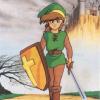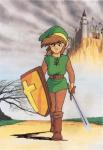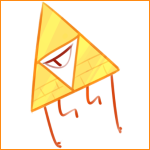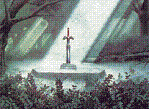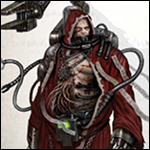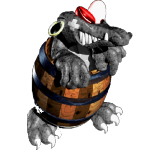QUOTE(LinktheMaster @ Aug 19 2012, 12:29 PM)

I really enjoy the way things were designed in the old days. A lot of games help you learn them without babying you too much.
Related, I once found this video about Mega Man's level design in telling you what to do without blatantly telling you what to do.
Note that there is a lot of cursing in the video, but it's still really informative.
Here it is.Ahh, yes. I had seen that before, but I watched it again.

While I don't think Megaman X is quite that fantastic of a game, I do agree that it used some very good "conveyed tutorial" techniques. Learning how to play the game was not difficult.
QUOTE(Cukeman @ Aug 19 2012, 01:19 PM)

This element is not so much present in the newest Zelda games, which is unfortunate
(I'm looking at you Clawshot, you ONLY let me hook to clawshot circles??), however
it has been used beautifully in previous games.
Well... in Skyward Sword and Twilight Princess we have clawshot targets, certain grates, ivy, and certain other types of climbable walls. But yes, there were fewer non-target grapple points in TP, and OoT outdid both of them (TP and SS) by making most wooden objects hookshot-friendly. Personally, I plan to emulate OoT by making anything wooden hookshot-friendly unless there's a good reason for it not to be.
QUOTE(Giggidy @ Aug 20 2012, 12:48 AM)

'd argue that fighting game button combinations are just bad design though, and not really an argument for stopping the game to feed the player a tutorial. Of course you're gonna get problems when you try to cram a bazillion different moves into 4 or 6 buttons. Contextual controls have similar issues, but I have no problem with those if you do them correctly.
Hey.... I play fighting games, mostly Soul Calibur, and I would definitely argue to the contrary.

The entire point of fighting games is to use a wide variety of moves with differing strengths and faults. If it seriously isn't the kind of game with so many moves that the player will need to look at the move list at SOME point, then it will be much harder to make it a good fighting game. If it's like Super Smash Bros. -- where it's about angle and trajectory and items and platforming, not just moves and combos -- it can work... but Street Fighter-style fighting games require more sophisticated button combos.
But I'd still consider Soul Calibur a good fighting game in that respect, even though it has some complex moves you need to look up. Why? Because, before it resorted to the complex combinations, the game made sure to use up the simple button combinations. Simply pressing any one or two attack buttons at once almost always results in a different attack, and you can combine it with a direction on the D-pad to access yet another set of attacks.
You don't need to look up the move list until you have tried out all the basic simple button combos, and every single character has a minimum of around 50 different moves that can be performed without memorizing multi-part button sequences. That's what I consider an elegant fighting game.

